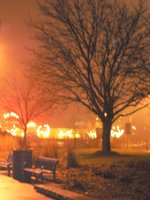All I could think was Dante’s inferno.
It struck me a little odd that I’d never given this piece of Italian literature the attention it deserved.
It was an extremely difficult read but well worth the while. The visual images, symbolism and ideas presented came back to me as I reflected.
I’m not feeling very articulate and so a list of interesting points will have to suffice.
It was an extremely difficult read but well worth the while. The visual images, symbolism and ideas presented came back to me as I reflected.
I’m not feeling very articulate and so a list of interesting points will have to suffice.
- The notion of active vs. passive sins. While most religious people do not fall in the actively sinful category I find it extremely interesting to think that they more than often fall in the passive category.
- From my understanding, those who committed sins against art were punished. In a world where art is often the expression of nonconformist or suppressed urges the idea of punishing someone for not appreciating art as it should be strikes me as somewhat revolutionary.
- The concept of purgatory and the cleansing of oneself by a punishment fit for the sin struck symbolic chords. Pride absolved by having to carry a heavy weight that does not allow the sinner to stand tall, proud or straight. Envy absolved by having the sinner’s eyes sewn shut unable to see admire which they had for their own someone else’s fortune. Avarice, by facing the ground unable to turn away from worldly possessions. My personal favorite sin, sloth, is absolved by being zealous and continually running up a hill.
- I particularly enjoyed the ideas associated with the rivers Lethe and Eunoe. The former makes the soul forget any previous sins while a sip of the later renews memories of good deeds. Sounds a little like our version prozac or booz.
- Dante makes mention of the fact that how he sees heaven as is limited by his capacity to see. He is thus incapable of having a greater experience than his mind soul or being will allow him to have. To each their own version of heaven. This reminds me of a scene from ‘What dreams may come’. The painter’s version of heaven is made beautiful colors all round. Having committed suicide she is unable to see past her sadness and thus the beauty around her is of no relevance. I am also reminded of Alanis Morrisette’s character in Dogma requiring an intermediary to communicate with the world. People and most angels are ill equipped to hear the overpowering voice of “God” and so it is presented to them in a form they can withstand.
- Though not profound I also found it interesting that hell was imagined to lie at the center of the earth right below Jerusalem. That then makes Jerusalem to some extent the stage of purgatory. With all its inhabitants in a constant state of struggle. Not heaven and not hell they are in turmoil.

3 comments:
I read that 6 years ago, but never got through purgatory, for some reason when inferno ended i lost interest, a bit disturbing now that i think of it. But what a fantastic piece of work, and your points are very insightful.
I've added ur link to my blog N.
I hope you don't mind.
I just added yours a few hours ago :) tab3an i don't mind, bel3aks...but was i supposed to ask first? :s
Post a Comment